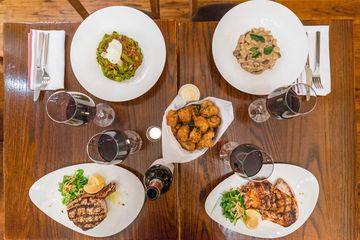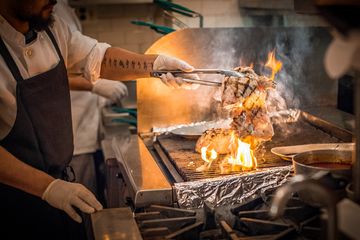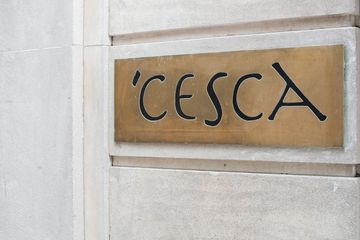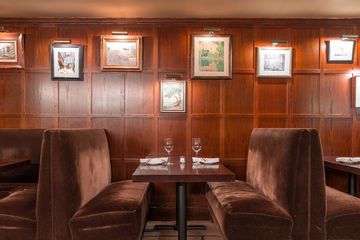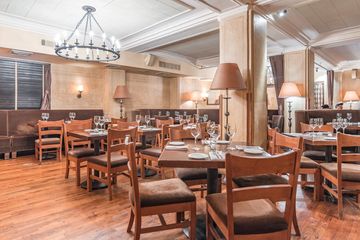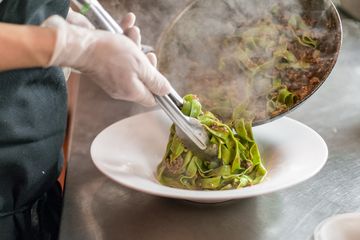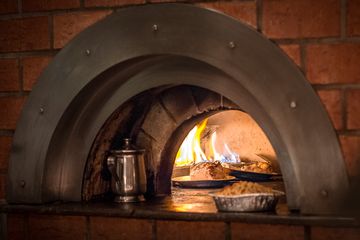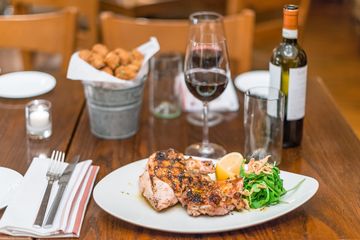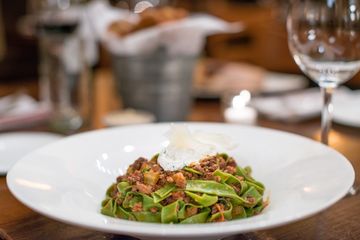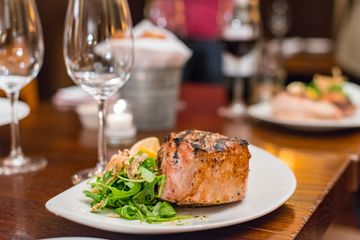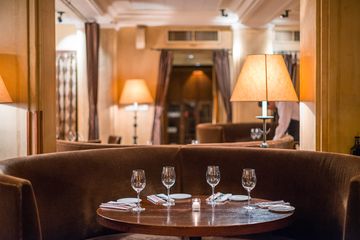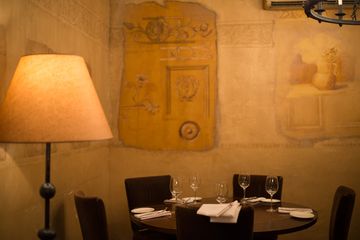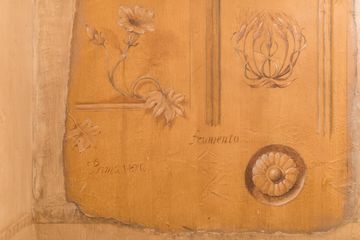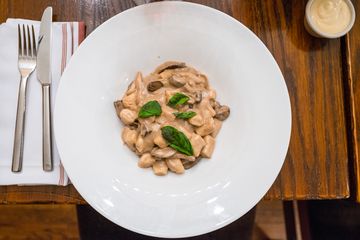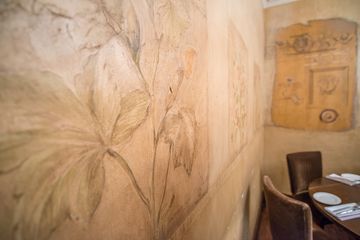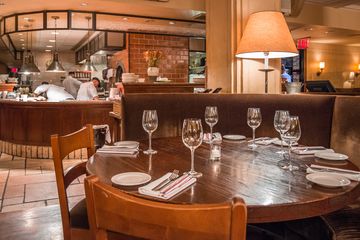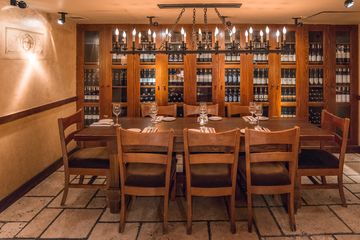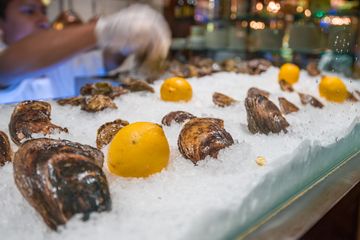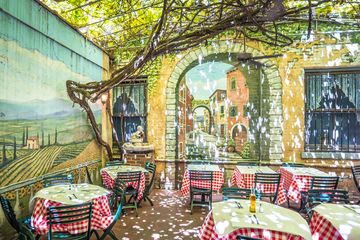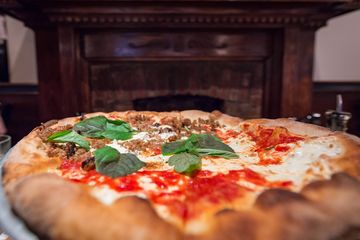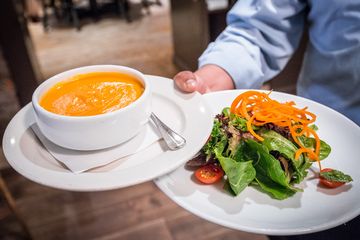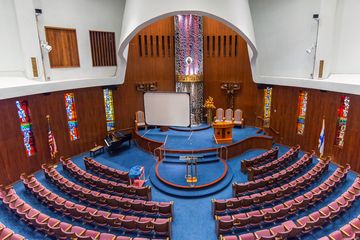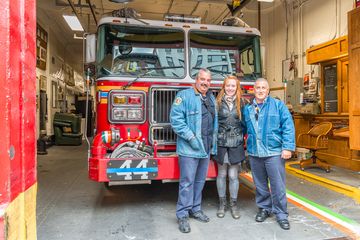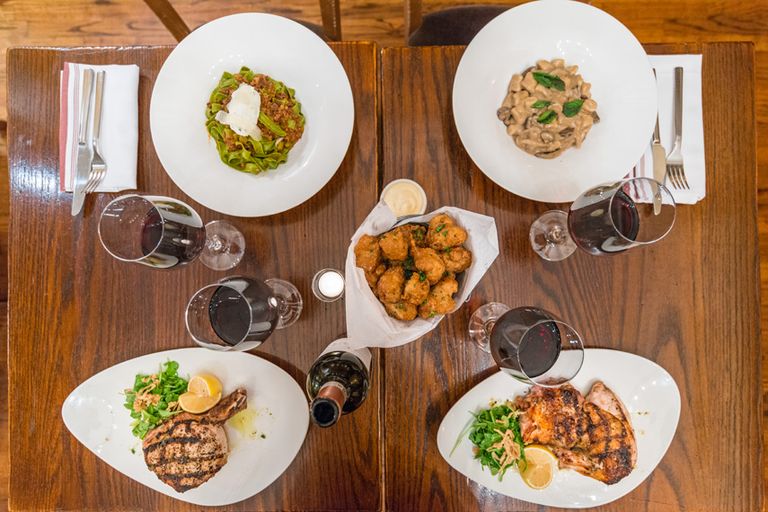
There is no question that 'Cesca is a fixture in the neighborhood. I have eaten here many times over the last few years, as I live in the area. Dining as a guest, however, is very different from witnessing what goes on behind the scenes in the late afternoon as the show is getting ready to begin. We watched in amazement as the staff arrived one by one, each taking their place, be it in the kitchen doing prep work, setting up the tables, lighting candles, getting the bar in order, or standing at the hostess desk, checking on the evening's reservations. It all came together seamlessly as if it were a staged production. Before we knew it, diners were being greeted and shown to their tables.
When it first began, 'Cesca was celebrity-driven. Tom Valenti, the well-known New York chef and co-owner of the former Ouest Restaurant started as the executive chef with Amanda Freitag, the current Food Network judge, as Chef de Cuisine. Both have since left the restaurant to focus on other projects. In their absence, the menu continues to evolve. I learned, for example, that Chef Kevin Garcia was responsible for creating my favorite crispy cauliflower dish, served in a silver bucket.
I was pleased that we were able to sample some of the other amazing items on the menu. The Manhattan Sideways team's Tom tasted the spinach tagliatelle Bolognese with a dollop of ricotta, a massive double-cut pork chop served with greens and lemon, and half a grilled chicken served simply and tastefully. According to Tom, “Chicken is chicken wherever you go, but this is exceptional.” I was perfectly content savoring the delicate potato gnocchi in a mushroom cream sauce - another favorite of mine at 'Cesca. While sitting and indulging in the incredible spread of food that was presented to us, Tom casually stated that, "This is the kind of place where, after you have eaten here, you immediately want to share the experience with someone else." I could not agree more, and I do introduce as many people as I can to this Upper West Side gem.
As we ate, we admired the simple but exquisite hand-painted murals at the back of the restaurant. We met Matt Zepf, the Director of PR and Marketing, who informed us that Wendy Hollander, whose work has been featured in many periodicals, including the New York Times, is the artist. She lives locally and painted the walls back in 2003 when the restaurant first opened. They are certainly worth taking note of when visiting 'Cesca, or if one is planning a private party, as this area can be closed off by drawing the curtains.
While chatting with Todd Whiteman, the General Manager at the time, about the clientele, he was pleased to tell us that “People used to come in with their little kids and now those kids are in college.” He then added, “Some people have been coming in two or three times a week for twelve solid years.” He went on to share the restaurant's connection to the Beacon Theatre nearby. I was most impressed with his clever marketing idea. Many years ago, he began building a relationship with the staff and musicians at the performance space. On any given night over the last decade or so, one could spot Patti Smith, Metallica, Greg Allman, Peter Frampton or a host of others stopping in for dinner either prior to their performance or afterwards. To this day, whenever a musician is performing at the Beacon, one can be sure that their music is quietly playing in the background at Cesca during the dinner hours.
Matt went on to tell me about the ways in which 'Cesca has tried to make a difference in the world. The restaurant is part of the Dine Green! Green Restaurant association, meaning they aim to be environmentally responsible. The restaurant is also very supportive of community groups and neighborhood organizations. 'Cesca helps the West Side Little League with fundraisers and holds congratulatory family dinners with French fries and chicken nuggets. The restaurant has also contributed to the Children’s Cancer and Blood Foundation. On one occasion, an offer to have 'Cesca’s chef come to a private home and cook for twenty people was auctioned off for ten thousand dollars, with every dollar going to the foundation. On a more personal scale, 'Cesca assists the community by helping individual neighbors feel at home. Todd shared that one frequent customer came to eat at the restaurant immediately after her husband passed away, just so she could feel something familiar. There is a tremendous sense of community within the walls of 'Cesca. Over the years, 'Cesca has become an integral part of the neighborhood.
